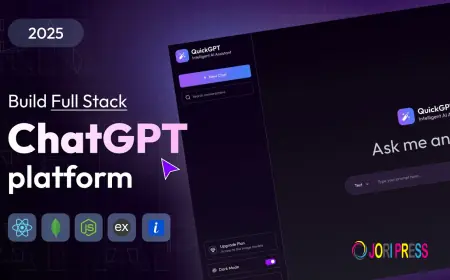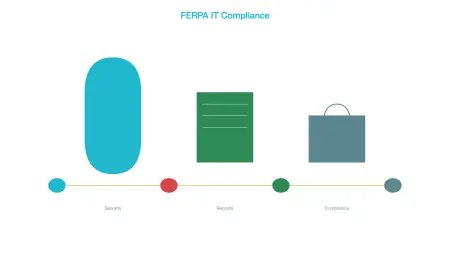What Should CTOs Know Before Investing in AI Voice Bot Development Solutions?
Before investing in AI Voice Bot Development Solutions, CTOs must understand key factors like integration complexity, data privacy, scalability, and long-term ROI.

As the demand for automation and personalized customer service grows in 2025, AI Voice Bot Development Solutions are rapidly emerging as a key enabler of business efficiency and scalability. But for Chief Technology Officers (CTOs), the decision to invest in AI voice bots goes beyond following trends—it involves strategic alignment, technical planning, and risk mitigation.
Before making this crucial investment, CTOs must fully understand the landscape of AI voice technology, its integration demands, potential ROI, and the impact it can have across the organization. In this blog, we outline everything CTOs should evaluate to make a well-informed decision when adopting AI voice bot development solutions.
1. Understand the Core Capabilities of Modern AI Voice Bots
Modern AI voice bots in 2025 are powered by advanced Natural Language Processing (NLP), voice recognition, and machine learning algorithms. They can interpret spoken language, respond conversationally, and learn from interactions to improve over time.
CTOs should assess whether a solution:
-
Offers real-time voice recognition with low latency.
-
Supports multilingual and contextual understanding.
-
Can handle complex queries beyond basic command-response tasks.
Understanding these capabilities helps determine whether the technology aligns with the business’s customer service and operational goals.
2. Evaluate Integration Complexity
Voice bots are not standalone tools—they must integrate seamlessly with existing systems such as CRMs, ERPs, contact center platforms, analytics tools, and security frameworks.
CTOs should ask:
-
Does the solution offer open APIs for easy integration?
-
Can it work with our current cloud or hybrid infrastructure?
-
Will the voice bot have access to real-time customer data to personalize conversations?
The smoother the integration, the faster the deployment—and the higher the potential ROI.
3. Assess Scalability and Future-Proofing
As businesses grow, so does the volume and complexity of customer interactions. CTOs need to ensure that the AI voice bot solution can scale effortlessly without requiring frequent manual interventions.
Key considerations include:
-
Can the platform handle high concurrent call volumes?
-
Is it designed to support omnichannel engagement, where voice interactions work alongside chat, email, and social media?
-
Does the vendor offer continuous upgrades that adapt to evolving AI standards?
Investing in a scalable and adaptable solution helps avoid costly overhauls in the future.
4. Prioritize Data Security and Compliance
AI voice bots process sensitive user data, which raises critical concerns around data security, compliance, and governance. In 2025, with evolving global regulations like GDPR, CCPA, and regional AI laws, this is a top priority.
CTOs must ensure:
-
End-to-end encryption of all voice interactions.
-
Clear data storage policies, including retention and anonymization.
-
Compliance certifications such as ISO 27001 or SOC 2 from vendors.
-
Role-based access controls and audit trails for accountability.
Failure to prioritize this area could result in security breaches and regulatory penalties.
5. Calculate Total Cost of Ownership (TCO) and ROI
AI voice bot development involves not only initial deployment costs but also ongoing expenses related to maintenance, updates, infrastructure, training, and licensing. CTOs need to perform a complete TCO analysis, including:
-
Development vs. off-the-shelf platform cost
-
Time and resources needed for training the bot
-
Infrastructure upgrades or cloud usage fees
-
Expected cost savings through reduced human workload
Then, calculate the return on investment (ROI) by comparing these costs against expected benefits like faster resolution times, 24/7 support availability, increased customer satisfaction, and operational savings.
6. Check Customization and Control Flexibility
Off-the-shelf bots offer quick deployment, but they often lack customization and brand alignment. CTOs must determine how much control their team will have over:
-
Conversation flows
-
Voice persona and tone
-
Training data sets
-
Business rule integration
Custom AI voice bot development gives CTOs the flexibility to create a solution that matches their company’s unique workflows and branding—but may require deeper collaboration with AI developers.
7. Ensure Robust Analytics and Monitoring Tools
One of the biggest advantages of AI voice bots is access to conversation-level analytics. These insights help measure performance, identify customer pain points, and optimize interactions continuously.
CTOs should ensure that:
-
The platform offers real-time dashboards for KPIs such as call volume, success rate, and sentiment analysis.
-
There are tools to monitor and fine-tune conversations without code.
-
Historical data can be used to improve machine learning models.
Data-driven decision-making is critical for maximizing the impact of the AI voice bot.
8. Evaluate Vendor Capabilities and Support
The AI voice bot space is growing rapidly, but not all vendors offer mature or reliable solutions. CTOs should vet potential partners based on:
-
Their track record and client references
-
Depth of their AI and voice technology expertise
-
Availability of post-deployment support and SLAs
-
Customization and onboarding services
-
Speed of innovation and roadmap alignment
Choosing the right vendor ensures that the voice bot evolves alongside your business needs.
9. Plan for Human-AI Collaboration
Despite the power of AI, voice bots can't (and shouldn’t) replace humans entirely. CTOs must design a hybrid customer support model, where:
-
AI bots handle FAQs and tier-1 tasks.
-
Complex or sensitive interactions escalate to live agents.
-
Human agents are equipped with real-time AI assistance.
This synergy not only boosts productivity but also ensures a consistently positive customer experience.
Conclusion: Strategic Insight Is Key to AI Voice Bot Success
Investing in AI Voice Bot Development Solutions in 2025 can dramatically transform customer service, enhance operational efficiency, and future-proof the organization. However, CTOs must approach this investment with a comprehensive strategy—balancing innovation with integration, scalability with security, and automation with human touch.
By understanding the technological and business implications outlined above, CTOs can confidently lead their organizations into a future where intelligent voice interaction is the cornerstone of customer engagement.
What's Your Reaction?
 Like
0
Like
0
 Dislike
0
Dislike
0
 Love
0
Love
0
 Funny
0
Funny
0
 Angry
0
Angry
0
 Sad
0
Sad
0
 Wow
0
Wow
0
















































